As opposed to camoflauge and blending in some animals, typically insects, but also others like amphibians and reptiles do the opposite. They are brightly colored often with elaborate designs- this is their way of warding off potential predators. Basically their colors say to other animals, “if you eat me I will be nasty” this is called aposematic coloration. One amphibian famous for this is the poison dart frog. There are about 175 species of these colorful creatures living in the rainforests of Central and South America and even a few in Hawaii.
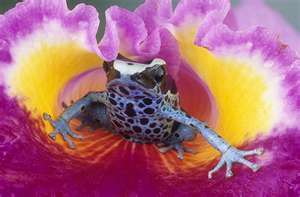
Using their long sticky tongues poison dart frogs feed mostly on small insects, particularly termites and ants.

Starting out as tiny eggs placed on leaves these frogs begin to develop under the watchful eye of the male poison dart frog, who checks on the eggs during their first two weeks. Once hatched the tadpoles swim onto the father’s back and catch a ride to their next destination- water. However it is not a large lake that the male carries the tadpoles too, it can be small holes in trees, coconut shells, even trash like tires and cans as long as they are filled with water. The tadpoles then continue to develop on their own, it takes about 3 months for them to become a small frog. 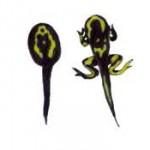
You can call them either poison dart or poison arrow frogs- but where does the poison come from. They do not make the poison themselves, scientists believe that the frogs eat insects who have aquired poison from the plants that they eat. Poison dart frogs are not actually poison in captivity- Pretty Cool! The one with the biggest bang is the Golden poison dart frog (picture above) who’s poison could kill a human.
And you know how they got their name right? There are some Amerindian tribes that have used the frogs secretions to poison their own darts for hunting.
With close to 200 species you can only imagine the color variations.
These tiny frogs do defend their territories- aggressive behavior includes calls, color changes in males, postural displays, chases, attacks, and wrestling.
They spend most of their time on the forest floor but venture to the canopy during breeding season. Sticky mucus helps them stay moist during their journey. Their lifespan is 5 to 10 years. Many of these beautiful frogs are endangered due to habitat loss and destruction. On your next visit to the museum be sure to check out our poison dart frogs in the Butterfly House. Everyday at 2:30 they are feed small crickets or fruit flies.

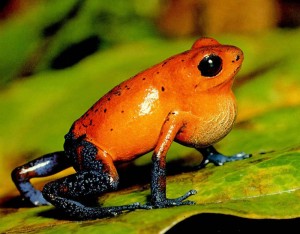
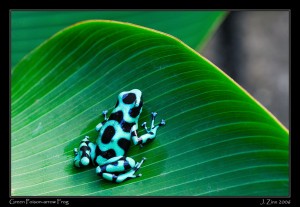
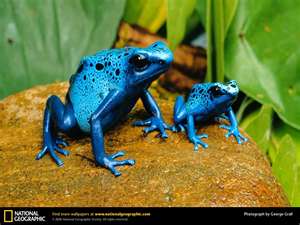
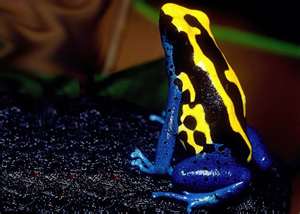
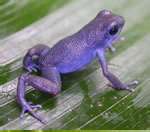
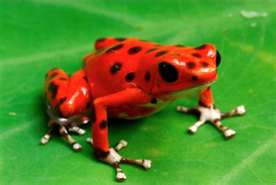
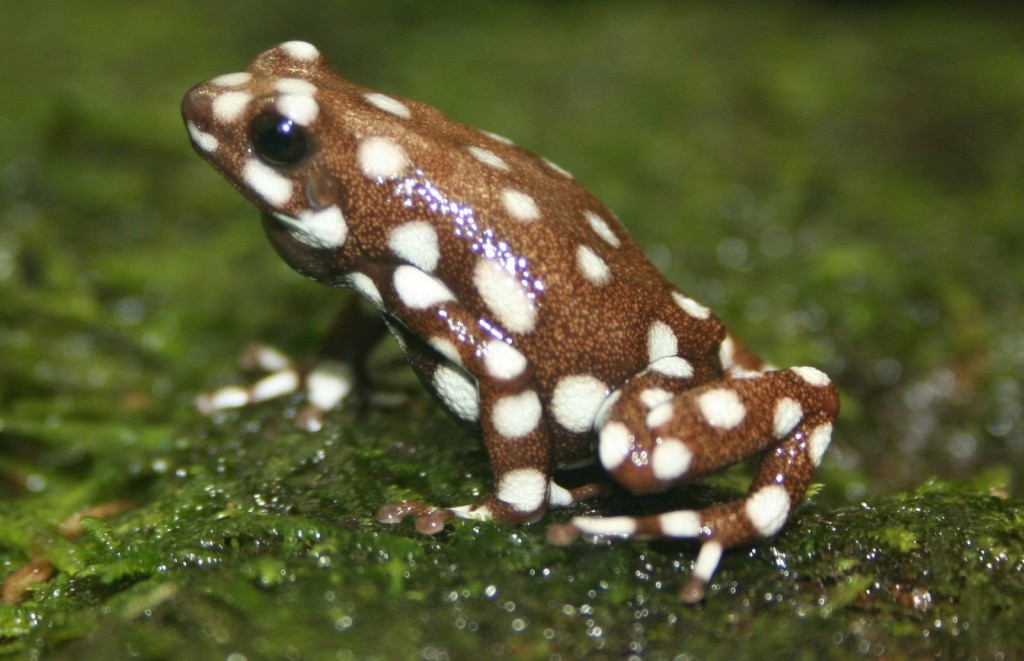
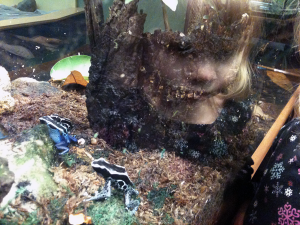
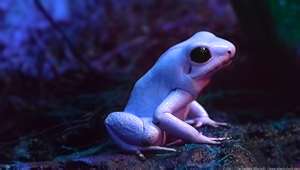
Very cool that it’s the MALE poison dart frog that looks after the tads. How do the fathers recognize their tadpoles as their own?
Wendy from what I read the male watches over the eggs until they hatch. So he’s kinda around the whole time. However once he drops them off-that’s it- they are on their own!